Muscular back pain is caused by an overload of the muscle. Find out about the symptoms, tests and treatment for the problem.
What happens to cause muscular back pain?
Muscular low back pain is very common. It is most often caused by lifting something or bending and over reaching. These overload the muscles of the trunk and spine in the same way as a strained calf or hamstring.
You can therefore usually state the moment it happened. “I lifted a plant pot”, or “I reached for a shoe whilst twisted on the sofa”. You have over stretched or torn muscle fibres in the numerous muscles either side of the back.
How does the pain feel?
There will be an initial pull, pain or tightening across the back. This will then get tighter over the next day or two and usually be more to one side. It is unusual to strain both sides of the back muscles.
It will be localised to one spot which may well be tender to touch. This is useful to differentiate from a facet joint strain as they are often not tender as they are quite deep. However, that is not to say that you cannot have both at the same time!
You rarely get nerve pain into the leg. You might get some tightness and ache in the buttock on the affected side but this will be minimal. If you have nerve pain in the leg then suspect you have another issue and read the other articles.
How to test your muscular back pain
Bending forward and side to side is often tight and tender.
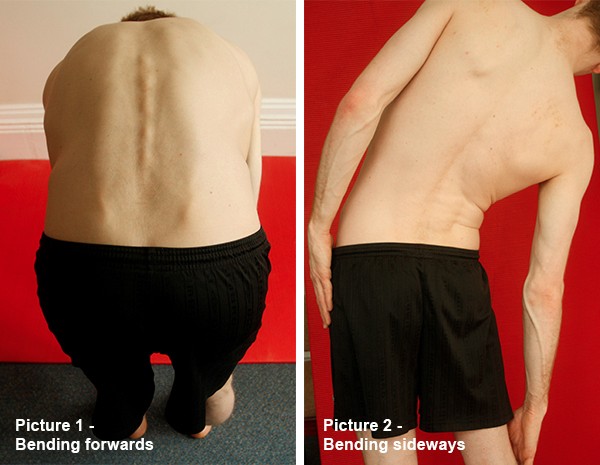
Bending away from the affected side especially. The worst will be the movement that caused it. There will be sharp and pulling in the back but little elsewhere in a muscle issue.
Palpation of the muscles by yourself or ideally a companion will reveal a specifically tender spot in the muscle. Sometimes with a knot or lump. This is the site of the strained tissues. With deeper spinal issues, you do not have such a specific spot of soreness.
Nerve tests like straight leg raise and the slump test will be comfortable and show good nerve range of movement.
The straight leg raise
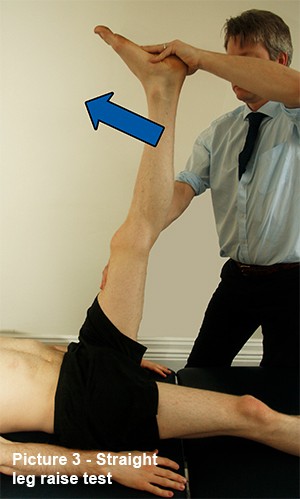
A positive test is when your affected leg is taken up, as in the picture, the range available on the affected leg is at least 20 per cent reduced by pain when compared to the other side. A muscle issue will have no pain or difference.
Slump test
Sit with your leg over the edge of a chair and put your arms behind your back and chin on your chest. Curl your upper and lower back forwards so you are slumping. Point your foot and slowly straighten your knee. When it reaches as far as it can slowly pull your toes up towards you.
You should feel a pull in the back of the knee, bum and sometime base of the back.
Keeping the leg static slowly look up towards the ceiling. The pull in the leg should disappear.
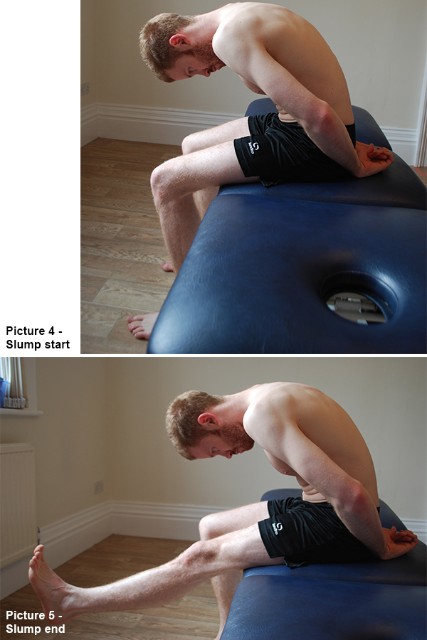
Compare it to the other side. The range the leg goes to before pain, the location of the pain and the change when looking at the ceiling should all be pretty much the same. If they are then this is normal and shows the nerve is happy.
If you have a completely different pain or pull distribution and the range is much shorter (more than 10 per cent) and it recreates your pain then the nerve is unhappy and there might be a disc issue as well. Please read the 'Disk problems' article for more information.
Whilst getting to this position might be sore in the back the actual leg movement should be pain free and similar side to side.
How to treat muscular back pain
The first stage is to rest. You have damaged muscle tissue and you have to let it heal over, in exactly the same way as you would a calf or hamstring.
The initial knitting of the fibres takes at least 5 days but they are still very weak. Rest and do not do anything that causes pain in the muscle or you will slow the healing – it is like picking a scab.
After the first 5 days you can start to ease into stretching but avoid sharp pain. If there is sharp pain to stretch it needs more rest.
Stretch 5 times a day for a couple of minutes but carefully.
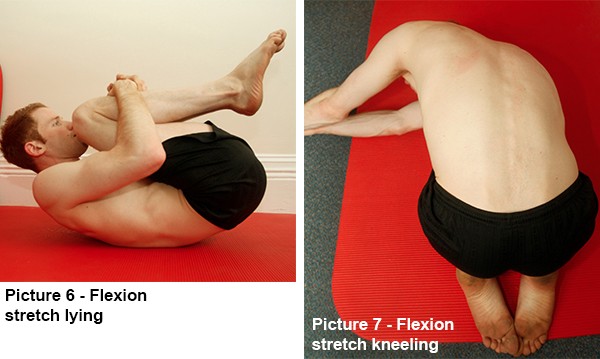
You can add a bit of a twist into this one, usually away from the affected side. It will pull more.
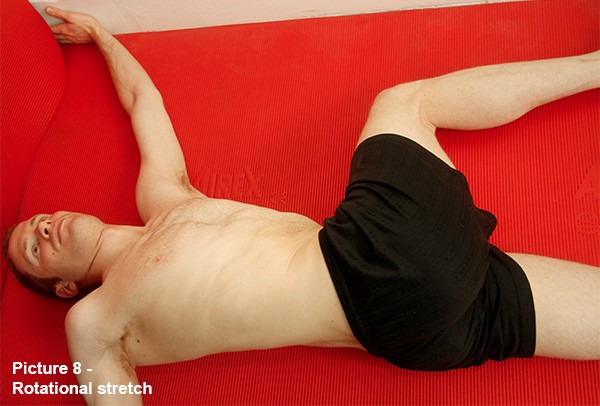
Cross training like bike and pool work are fine as long as they are not painful. Gentle massage and rolling is also good.
At day 8 – 10 or once there is no pain to stretch and to move you can start to jog. This has to be within pain and build to 1 km at a very steady pace over 3 -5 days. You need to be brutally honest with yourself.
Ache and a bit of tightness afterwards that settles by the net day is fine. Anything sharper or longer lasting than this needs more rest and easy stretching.
Once you have eased into a jogging routine for another week without issue then you can look to build pace and duration.
It is important to look at improving your strength and core muscles. There are several articles on realbuzz about core but these are some very simple exercises to start with.
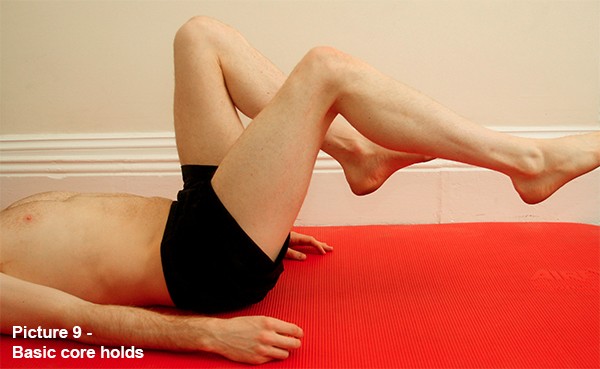
Lay on your back and tighten in your lower tummy. The belly should pull in not bulge out and the back should stay down towards the matt. Do not allow the back or pelvis to move whilst you lift your feet off of the floor and start to straighten a leg. If the back moves or you are really straining and the tummy is bulging, stop, reset and try again. Do sets of 30.
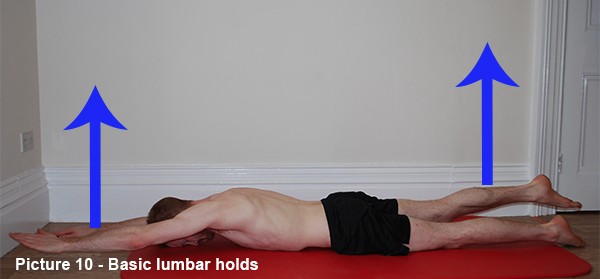
Lay face down. Tighten in the tummy muscles and just lift your upper back and head upwards to engage the lumbar muscles. Do not try to arch very high it is enough to engage and hold. Then lift one leg and the opposite arm just off of the floor, but only just. Hold for 15 seconds 8 times.
For more information on lower back pain injuries, visit our 'Introduction to lower back pain' article.















